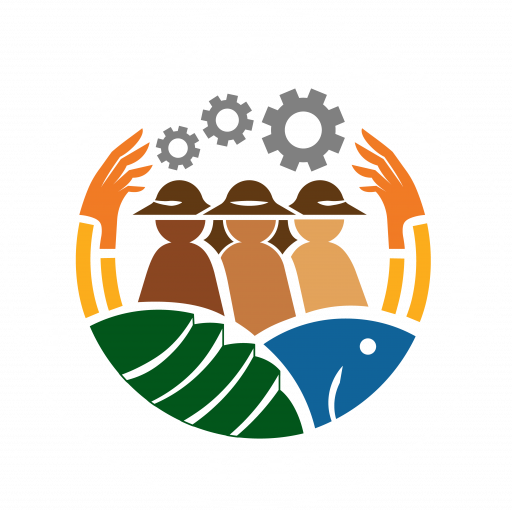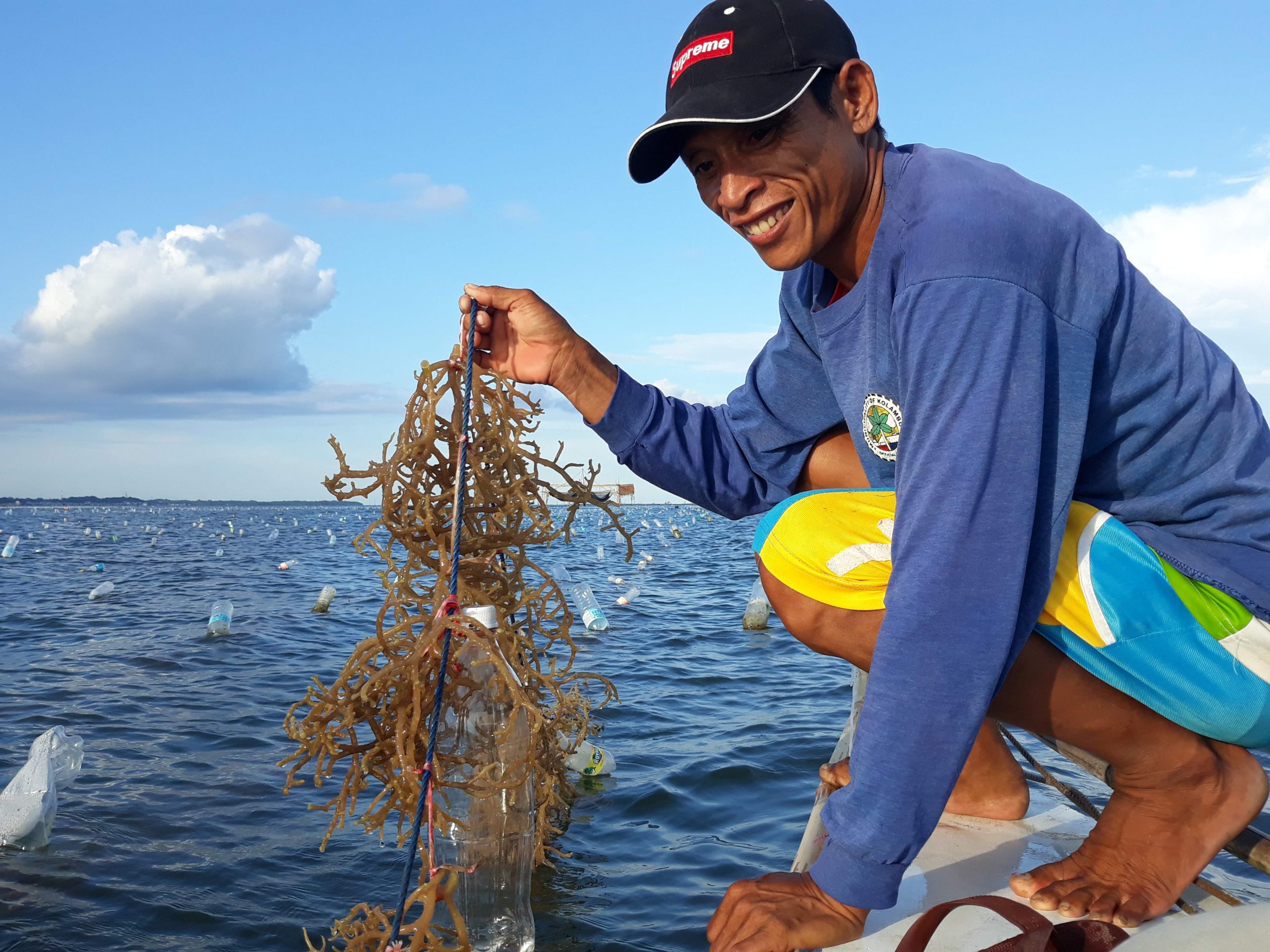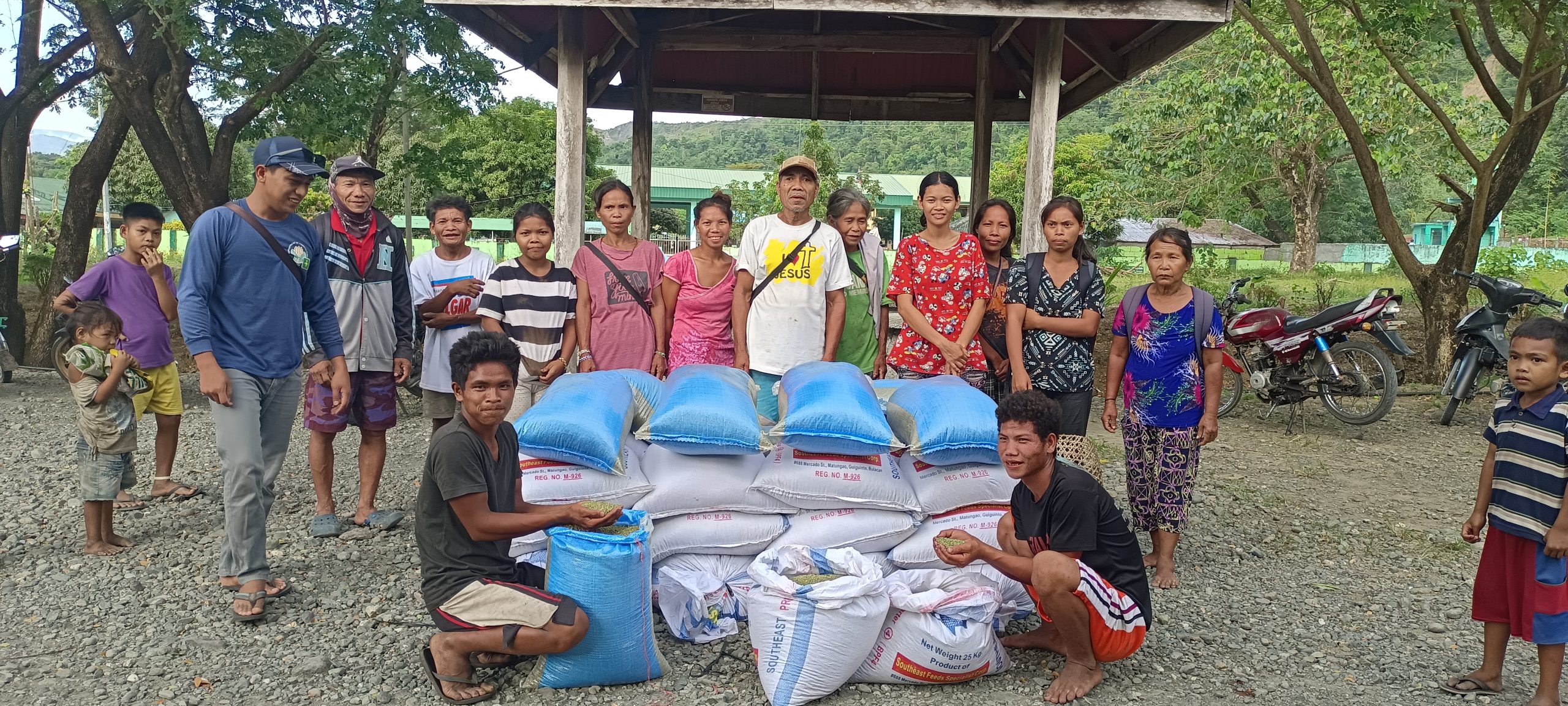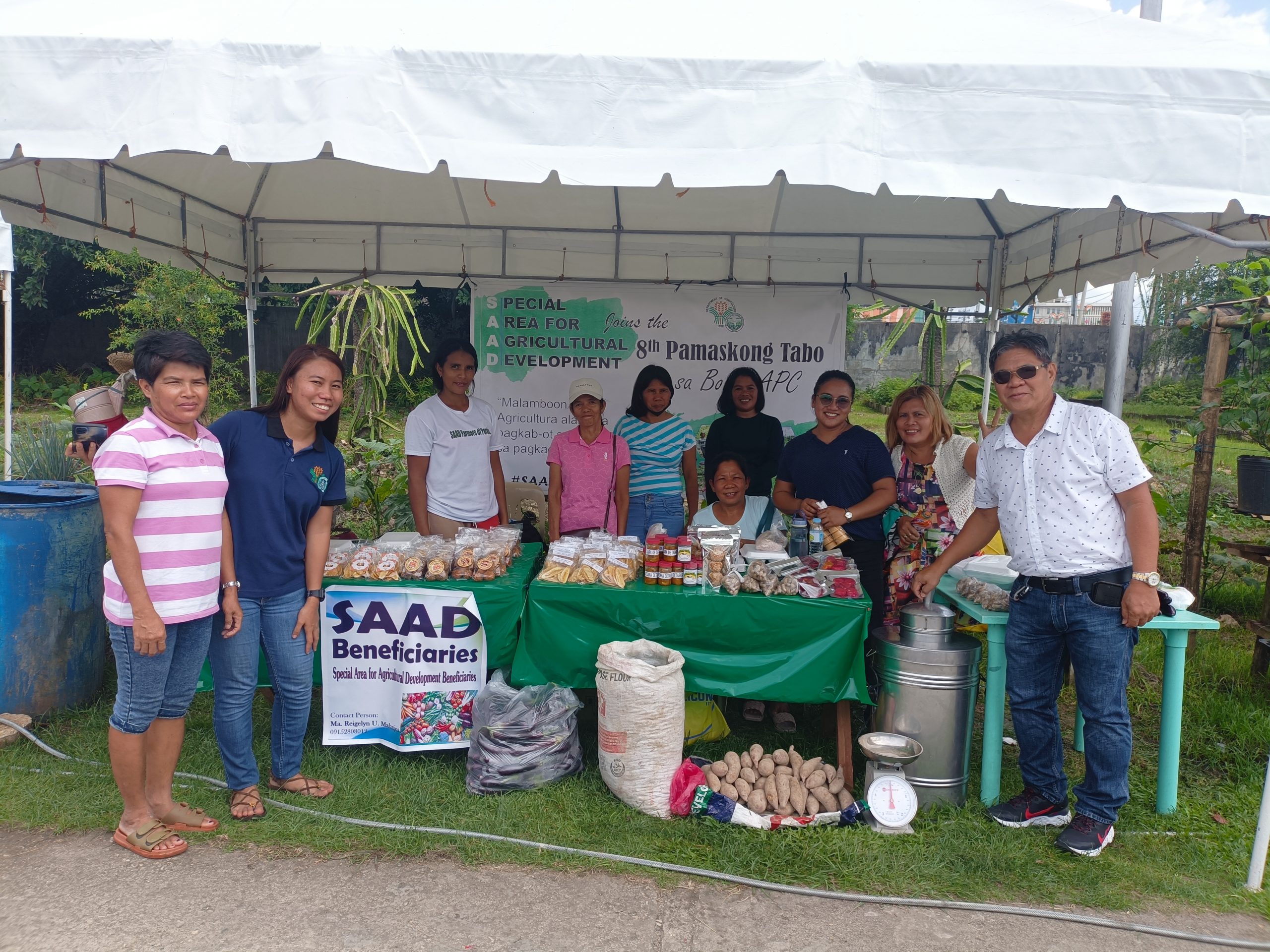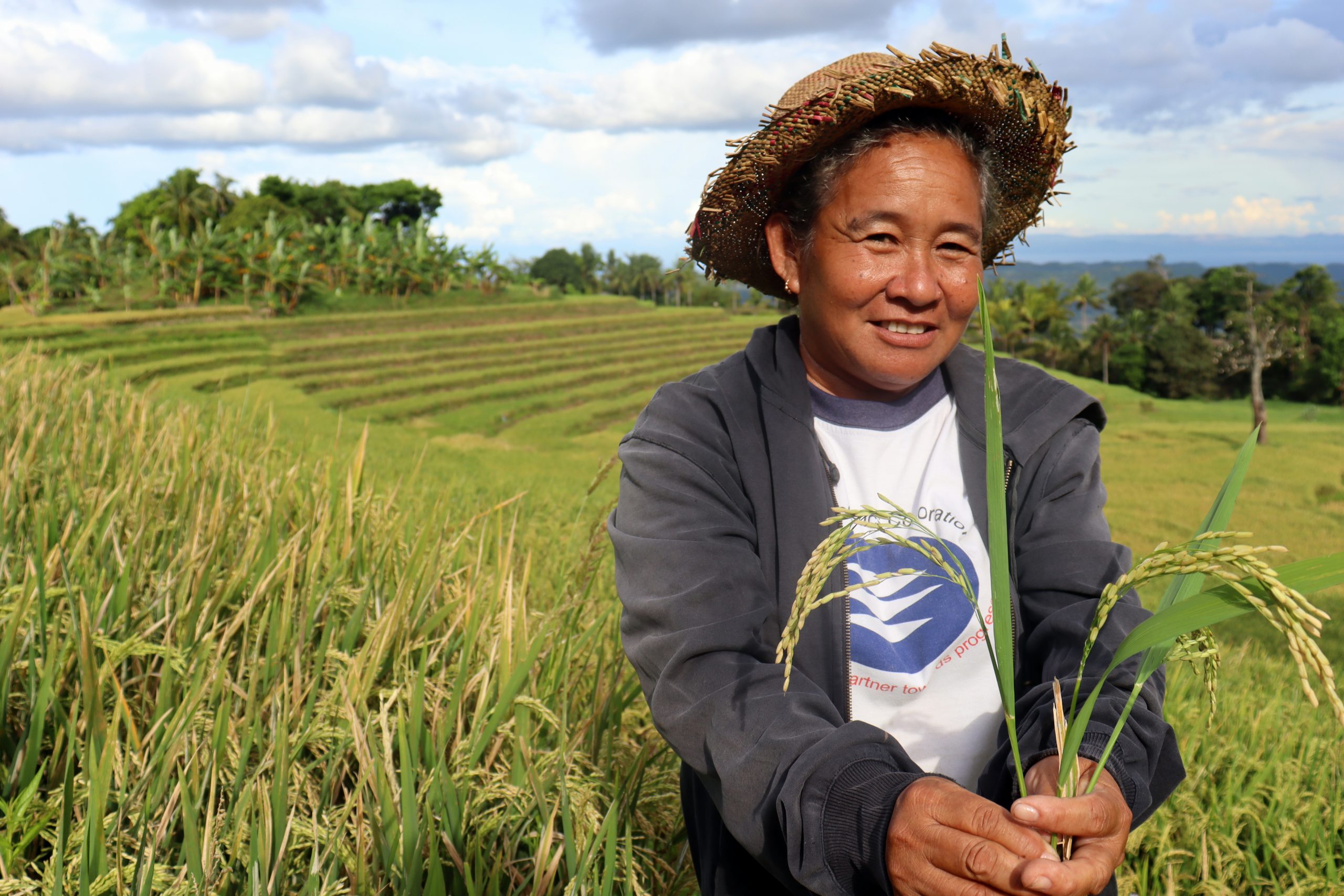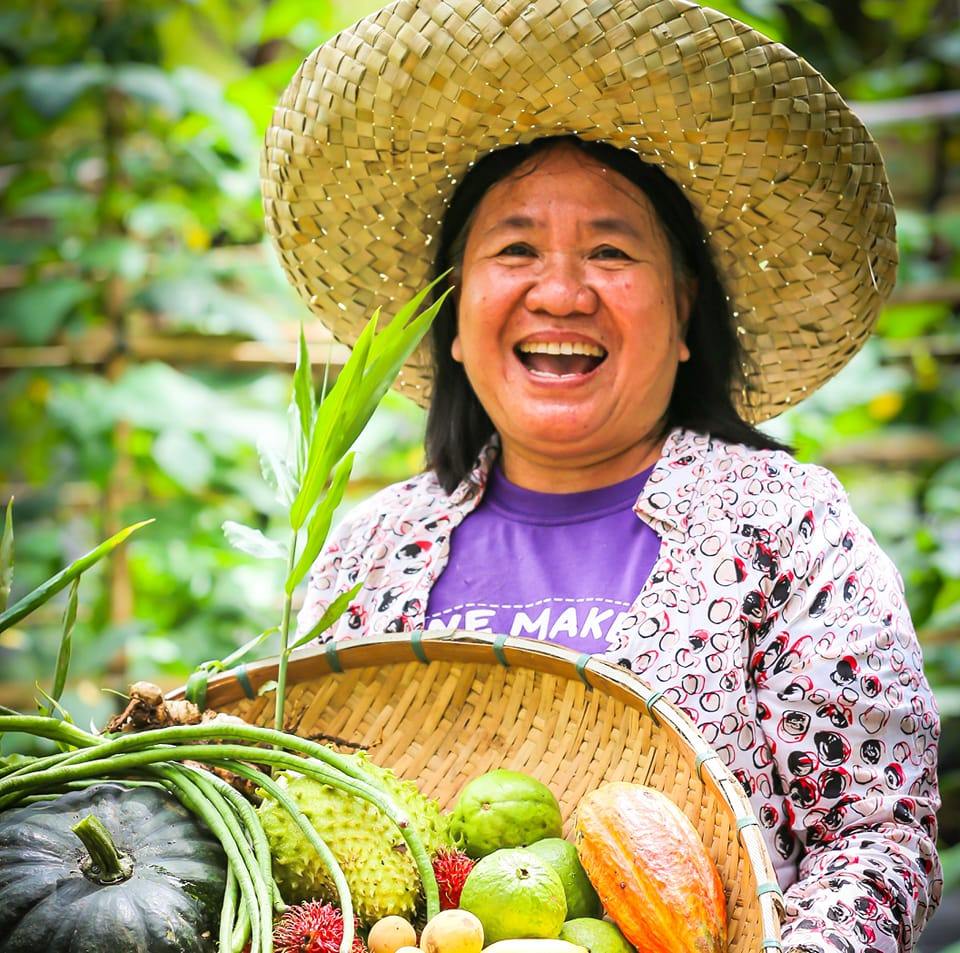DA-SAAD’s contribution to climate change adaptation: thriving seaweed culture projects
The Department of Agriculture-Special Area for Agricultural Development (DA-SAAD) seaweed projects adapt to changing climate.
The Philippines being archipelagic in nature is known for its vast and diverse aquatic resources. The majority of the coastal community rely mainly on capture fishing for centuries. In the previous years, harvesting fish only requires throwing a cast net or set nets in the nearshore area and then capturing enough fish to peddle around the local market to support the fisher’s family needs.
Iba na ang panahon. Climate change has both direct and indirect effects on agricultural productivity including changing rainfall patterns, drought, flooding, and the geographical redistribution of pests and diseases. The vast amounts of CO₂ absorbed by the oceans cause acidification, influencing the health of our oceans and those whose livelihoods and nutrition depend on them (FAO-UN).
For example, in response to the climatic changes evoked and the devastation left by Super Typhoon Yolanda (international name Haiyan), a multi-agency initiative led by the Department of Science and Technology (DOST) was launched. This project called Iba na ang Panahon in 2014 aimed to equip the local government units (LGU) all over the country with science and technology knowledge and tools to help prepare against natural calamities and the changing weather.
In a more comprehensive look, these changes in the global climatic conditions have a trickling effect that is more real to and felt by the sectors and people than how it reflects in statistics. There is an imminent threat to physical, economic, food, and nutritional security among the farmers and fishers primarily for inhabiting the areas vulnerable to natural calamities, and for relying their livelihood on crops cultivation and fishing activities that can be impeded without warning, not to mention putting lives at risk at any time while on the job.
The emphasis on the microscale perspective is needed to call for more efficient adaptation strategies more than providing responsive actions. Crops are susceptible to flooding and typhoon destruction, while the changes in the ocean alter species routine, as well as capturing patterns. Those living near the coastal areas, economic-wise, abandon their conventional means of livelihood to look for alternative sources for family needs’ sustenance. This is due to fishing grounds becoming farther and farther away from the coast that it required more effort to catch fish, compelling the fisherfolk to shell out bigger financial inputs.More adaptive than responsive. The core response of the Food and Agriculture Organization of the United Nation to countries facing climate change does not focus on reactive but revolves around transformative actions focused on mitigation and adaptation. Synergy across institutions is a prime concern, alongside climate-smart agricultural projects and approaches. In the Special Area for Agricultural Development (SAAD) Program, for example, there is a need to reiterate the integration of adaptation and mitigation-focused projects while still prioritizing response.
Serving the geographically isolated areas, and the rural poor, the pressure is greater on the implementers as the program prioritizes sustainability in the latter years under the leadership of Dr. Myer G. Mula. What is being demonstrated here is that, in responsive orientation, the program provides replenishment assistance to the covered areas affected by a calamity or disaster. While in adaptive orientation, in the Cordilleras, for example, erosion-resilient farming is being practiced among farmers considering their geographic vulnerability. This prioritization is possible with effective synergy (of institutions, communities, and the local government) and policy-making, strengthening, and implementation.
SAAD is just one of the DA programs that prioritize far-flung and marginalized groups who are more vulnerable to the effects of climate change and who obviously need more assistance on the matter. While focused more on the agricultural sector than the fisheries, the program takes pride in its attempt to implement projects that are sustainable, for climate change adaptation, and contribute to its mitigation.
What about the fisheries sector: a closer look at seaweed farming
In the early 1970s seaweed farming was introduced to Sulu and later on adopted in the entire country. Unlike capture fishing, where most men are involved in the activity; seaweed aquaculture is a family affair where women and children can participate in the production.
Economic-wise, for the majority of fisherfolk, seaweed farming is a viable, sustainable, and easy alternative source of livelihood. In Northern Mindanao, the province of Lanao del Norte is a major contributor of seaweed, comprising 78% of the total production in the region (PSA, 2016). The growers adopt the floating lone-line method of seaweed cultivation which is commonly used in commercial farms because it offers lower labor cost and materials, is easy to manage with higher net income and return of investment, and has a shorter payback period as compared to other culture methods.
Adhering to the adaptive quality of projects, Duarte et al., (2017) in their published study (Can Seaweed Farming Play a Role in Climate Change Mitigation and Adaptation) mentioned that seaweed farming contributes to climate change adaptation by damping wave energy and protecting shorelines, elevating pH levels, and supplying oxygen to waters, thereby locally reducing the effects of ocean acidification and de-oxygenation. Moreover, seaweed aquaculture can help prevent coastal eutrophication (caused by the increase of water nutrients due to runoff, use of fertilizers, and/or excessive organic load composition) by absorbing large quantities of nitrogen, phosphorus, and carbon dioxide thereby preventing algal blooms such as red tides that may affect and place heavy economic losses on coastal aquaculture.
However, from the annual production of 44,279.10mt in 2010, seaweed production decreased to 32,179.84mt in 2018. Due to anthropogenic and environmental factors such as poor farming practices, abuse of resources, adulteration, use of chemicals, the occurrence of diseases, in addition to global warming which resulted in unfavorable weather conditions, the industry is facing a threat that forces the fisherfolk to venture into the land-based source of income.
With this dilemma, most seaweed farmers stopped their production and engaged again in capture fishing despite the minimal catch, while others turned to other land-based casual labor such as driving habal-habal and construction to provide food on their table. As a result, their seaweed lines were left to rot and inoperable due to the high cost of farm implements that prevent them from continuing seaweed farming.
Revitalizing seaweed farming
Seeing this as an opportunity to not just aid the farmers but also help the coasts, in 2019, the DA-SAAD through the Bureau of Fisheries and Aquatic Resources (BFAR) tapped local seaweed growers with the aim to revitalize the local production of seaweed in the community.
Prior to the project, a series of social preparation activities such as local consultations, coordination meetings, livelihood assessments, and training assessments conducted led to the identification of two coastal municipalities, Tubod and Kolambugan as the program beneficiary.
The Tangueguiron Seaweed Growers and Fishermen Cooperative (TASEGFICO) of Tubod and the Simbuco Aqua Marine Multi-Purpose Cooperative (SAMMPC) of Kolambugan composed of 273 seaweed growers each received a Php 1,208,050 worth of Seaweed Project which included propagules, farm implements, and Training on Seaweed Farming Technology, Disease Identification, Mitigation and Management, Good Aquaculture Practices, Seaweed nursery management.Both groups recorded a gross income of Php 900,000 each from dried and fresh seaweed for their 2019 production.
However, in the course of project implementation, these cooperatives were discouraged again from the activity due to the occurrence of diseases such as ice-ice and epiphyte infestation. Adding to the challenge is the lack of seaweed propagules to source out for the next production cycle.
Again, classified as a response-oriented action, the BFAR-SAAD 10 provided support to the cooperatives (same inputs in 2019) for the next cropping (2021).Establishment of seaweed propagation center
Moving forward, SAAD, aiming for a more adaptation-oriented action, provided the cooperatives with a seaweed nursery to aid in the increasing need for seedlings. Funded under the FY 2021 budget, the propagation center secures a whole year-round production with a projected seaweed propagule production of 30,000 kilograms per year. Included in this project are initial stocks and training on nursery management to capacitate the fisherfolk.
Aside from the aquaculture assistance, each group also received one unit of postharvest processing equipment and utensils to minimize postharvest losses; one unit of community-based mini-processing shed with 5x6m dimensions, and training on postharvest technology for the production of seaweed value-adding products such as ice cream, crackers, chips, maja, noodles, and pickles were implemented. Their products are promoted and displayed by BFAR 10 during trade fairs and market-linking activities.
Committed and grateful for the opportunity, the seaweed growers enthusiastically responded by ensuring that there are enough seedlings to supply each members’ farm, and initiated to expand their seaweed farms from less than 5 hectares (ha) in 2019 to 20ha in 2021 for grow-out production to sustain the project.
The pursuit to establish a seaweed laboratory and land-based seaweed nursery establishment
The conventional method of seaweed propagation is usually obtained through vegetative reproduction such as direct fragmentation and thallus cutting. However, the repetitive multiplication of seaweeds through this method affects the quality of seaweeds being produced such as the degradation of genetic variation, growth, carrageenan quality, and lower protection against diseases.
Taking the project to another level, TUSEGFICO and SAMMPC in partnership with BFAR, LGUs, and academic institutions planned to establish seaweed laboratories and land-based seaweed nurseries in Lanao del Norte. These laboratories target to produce seaweed propagules using tissue culture.
In this method, a high-yielding, and fast-growing strain of seaweeds with improved quality of phycocolloids can be produced and allow the production of disease-free varieties that do not depend on any season and condition of natural environments. Phycocolloid is a product derived from seaweeds used in the food industry for gelling, thickening, and stabilizing agents.
These on-site production facilities are seen to produce a steady supply of seaweeds for the grow-out farms especially when typhoons and severe flooding wipe out the entire seaweed cultivation areas. Resilient in any season, the growers may resume their cultivation without the need to source out seedlings from other regions.
However, a feasibility study on the financial, technical, and administrative assessment capability of the cooperatives to establish the facility is needed as it requires a large sum of money (millions).
Rallying for support
Despite the limited budget poured into the fishery sector, SAAD continues to provide opportunities to the fishers while advocating seaweed farming to mitigate the effects of climate change.
The seaweed aquaculture in Lanao del Norte has big potential and more than 500 hectares are underutilized due to the lack of financial capability of the farmers and low financial support from the government. However, prioritization is devised with limited resources, the program can only directly support 363 growers of more than 2,000 seaweed farmers in the province.
Believing in the potential of the industry, SAAD provides assistance for seaweed culture projects in Magsaysay, MIMAROPA Region, Antique in Region 6, and Negros Oriental in Region 7.
The fulfillment of the seaweed lab and land-based nursery is seen as a device not only to sustain but also to expand the coverage of the program. Clearly, SAAD is fixed with its objective and has a solid vision of who to target, evident in the policy strengthening, continued facilitation of synergistic efforts involving most of all the community, and continuously seeking for science-based facts through research and development coordinated with the rightful institutions.
With the program’s conclusion, the implementers’ rally for an extension to continue what has been started. The community’s role in this undertaking is to use their collective action raised in proper media and channels to help call for the same cause. Not only that, while traditionally, the smallholders equate to a small voice in policy and leadership choices, they can seek ways to assert their needs at the local community level. What is meant by this is to maintain close coordination and dialogue with the local leaders to prioritize sound agricultural investments, especially the projects that are research-based. They should also help themselves to be more self-sufficient by continuous collaboration – with or without SAAD, and adoption of modern modes and tools of farming.
Lastly, this collective, synergized effort should always be guided and focused on the benefit of more fisherfolk, their community, and sustainability while increasing the seaweed production of the region. The more seaweed culture projects that operate in the coastal areas, the more that the local communities drive their future by contributing to climate change adaptation.
Authors:
Al Jun Barbon Magamano, BFAR Lanao del Norte Aquaculturist II
Jessamae Gabon, SAAD NPMO PR and Comms
References:
Department of Agriculture. Agribusiness and Marketing Assistance Division. 2019. Investment guide for seaweed retrieved from https://www.da.gov.ph/wp-content/uploads/2021/04/Investment-Guide-for-Seaweeds.pdf
Duarte CM, Wu J, Xiao X, Bruhn A and Krause-Jensen D. 2017. Can Seaweed Farming Play a Role in Climate Change Mitigation and Adaptation? retrieved from https://www.frontiersin.org/articles/10.3389/fmars.2017.00100/full
FAO. 2018. The global status of seaweed production, trade, and utilization retrieved from https://www.fao.org/3/CA1121EN/ca1121en.pdf
Philippine Statistics Authority. https://openstat.psa.gov.ph/
Relevant readings:
Bermejo, K. (2017, October 17). Climate change will impact Philippines’ ability to feed its people. Eco-business. https://www.eco-business.com/news/climate-change-will-impact-philippines-ability-to-feed-its-people/
Food and Agriculture Organization. (n.d.). FAO’s work on Climate Change. Food and Agriculture Organization of the United Nations. https://www.fao.org/climate-change/en/#:~:text=FAO%20is%20supporting%20countries%20to,and%20the%20Sustainable%20Development%20Goals.
Food and Agriculture Organization. (n.d.). FAO’s support to countries facing climate change. Food and Agriculture Organization of the United Nations. https://www.fao.org/climate-change/our-work/what-we-do/en/
